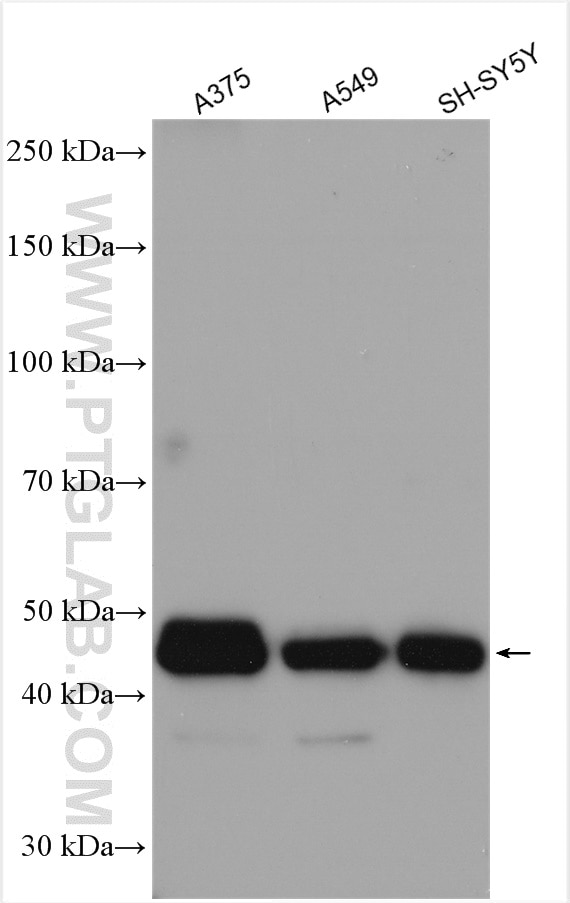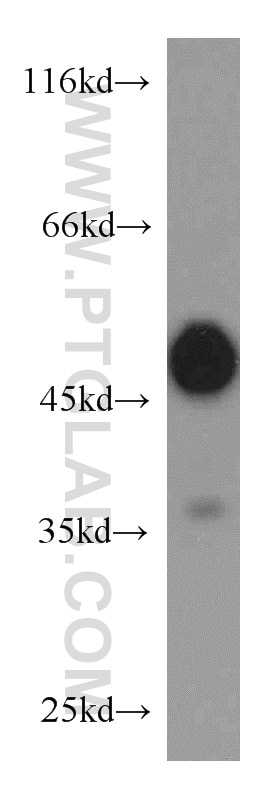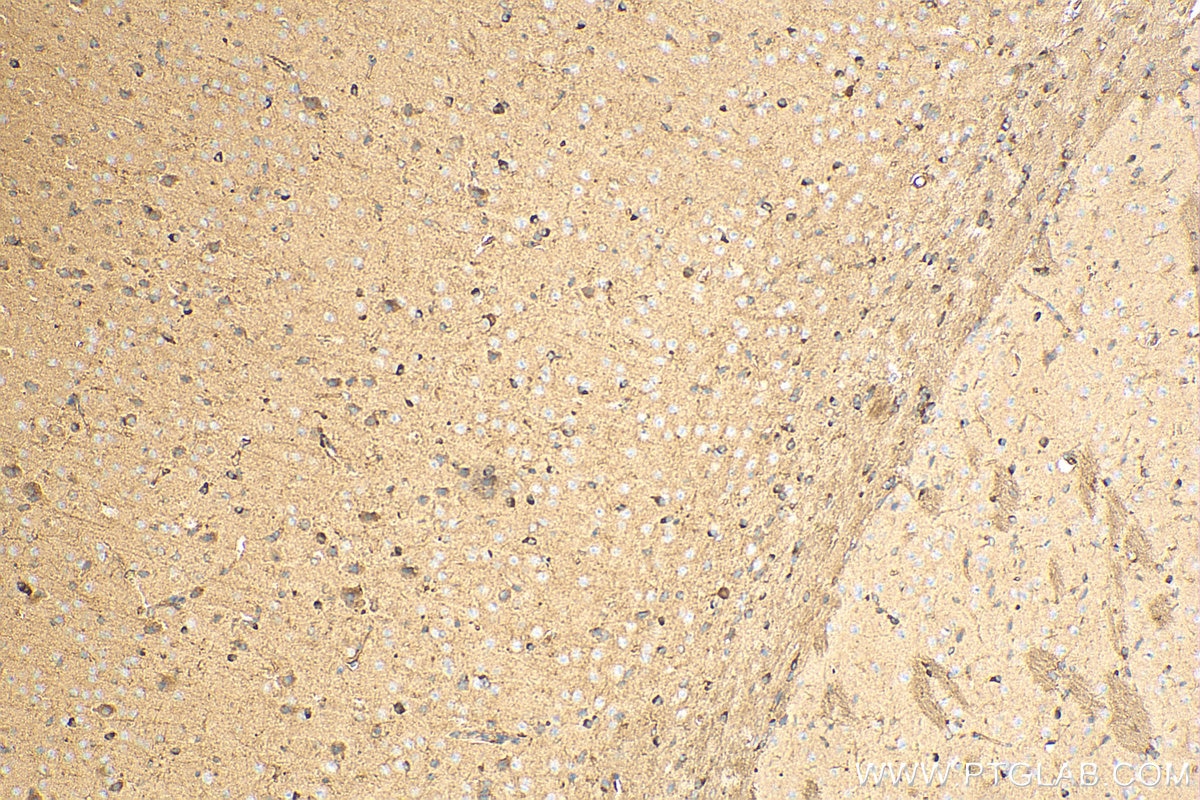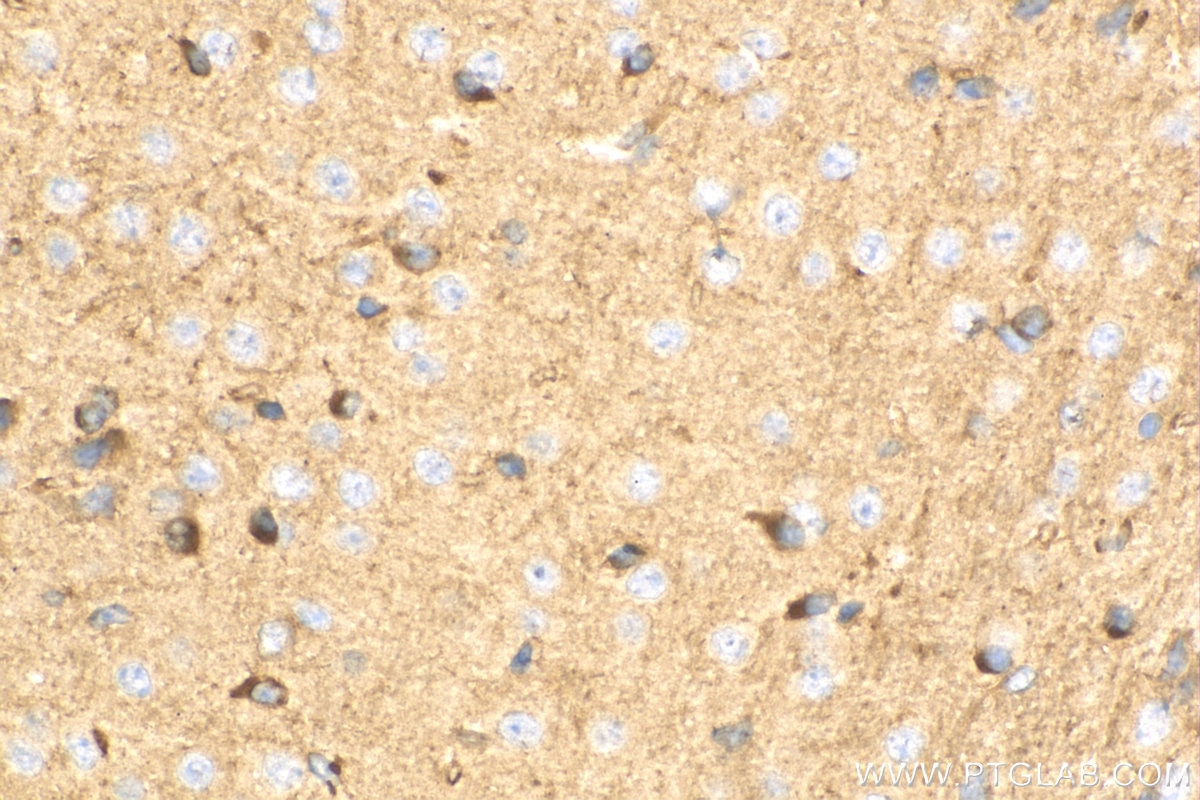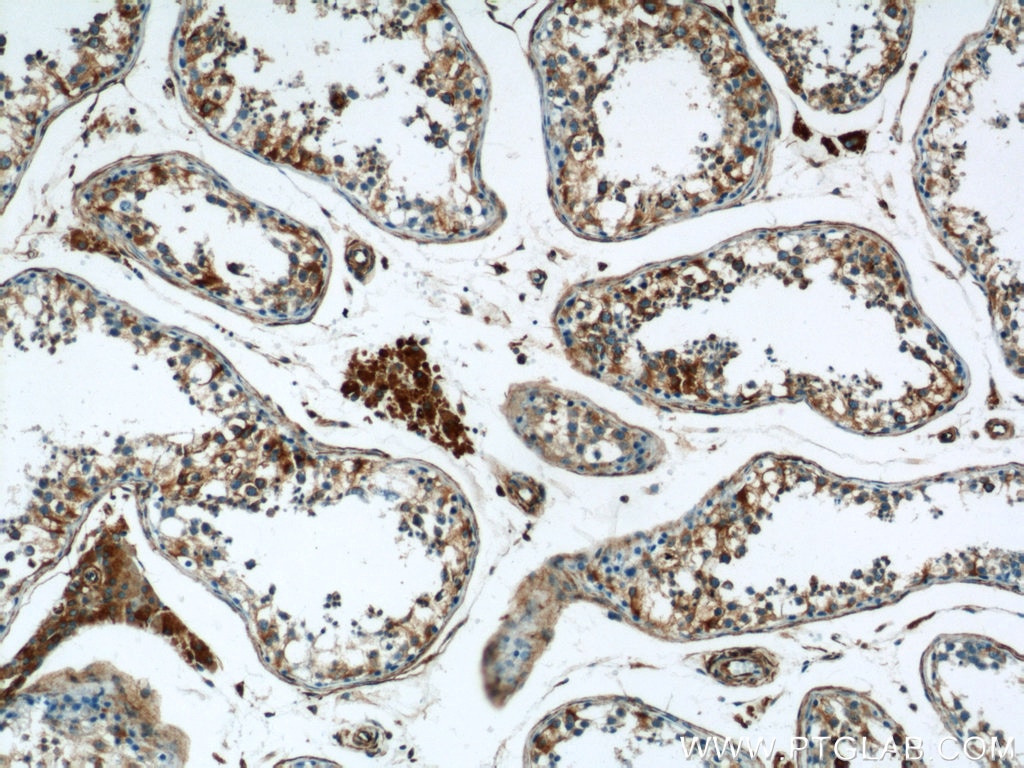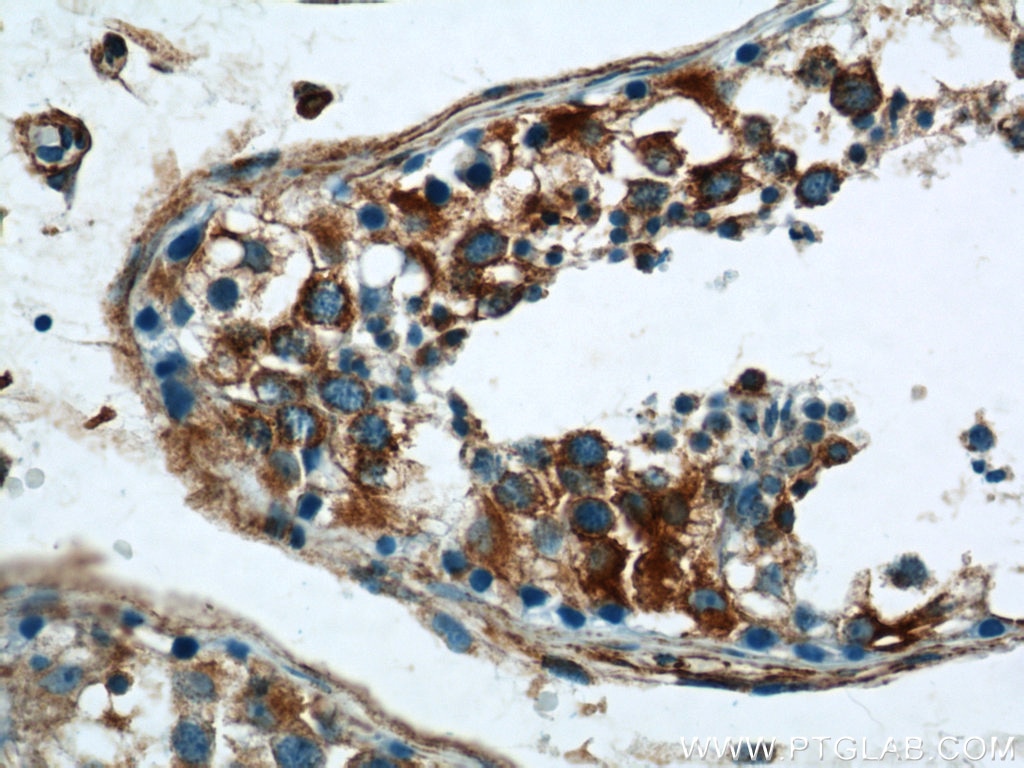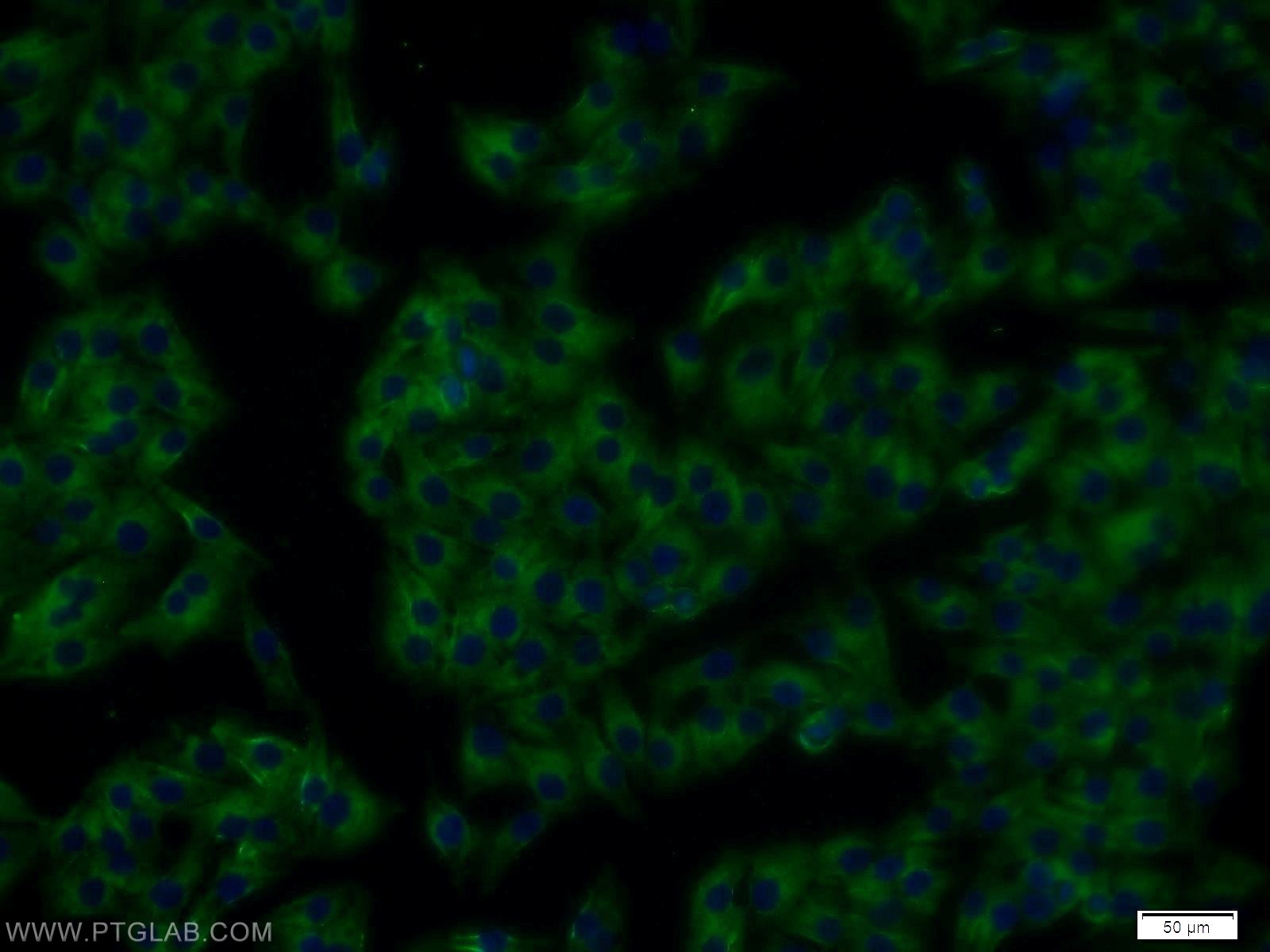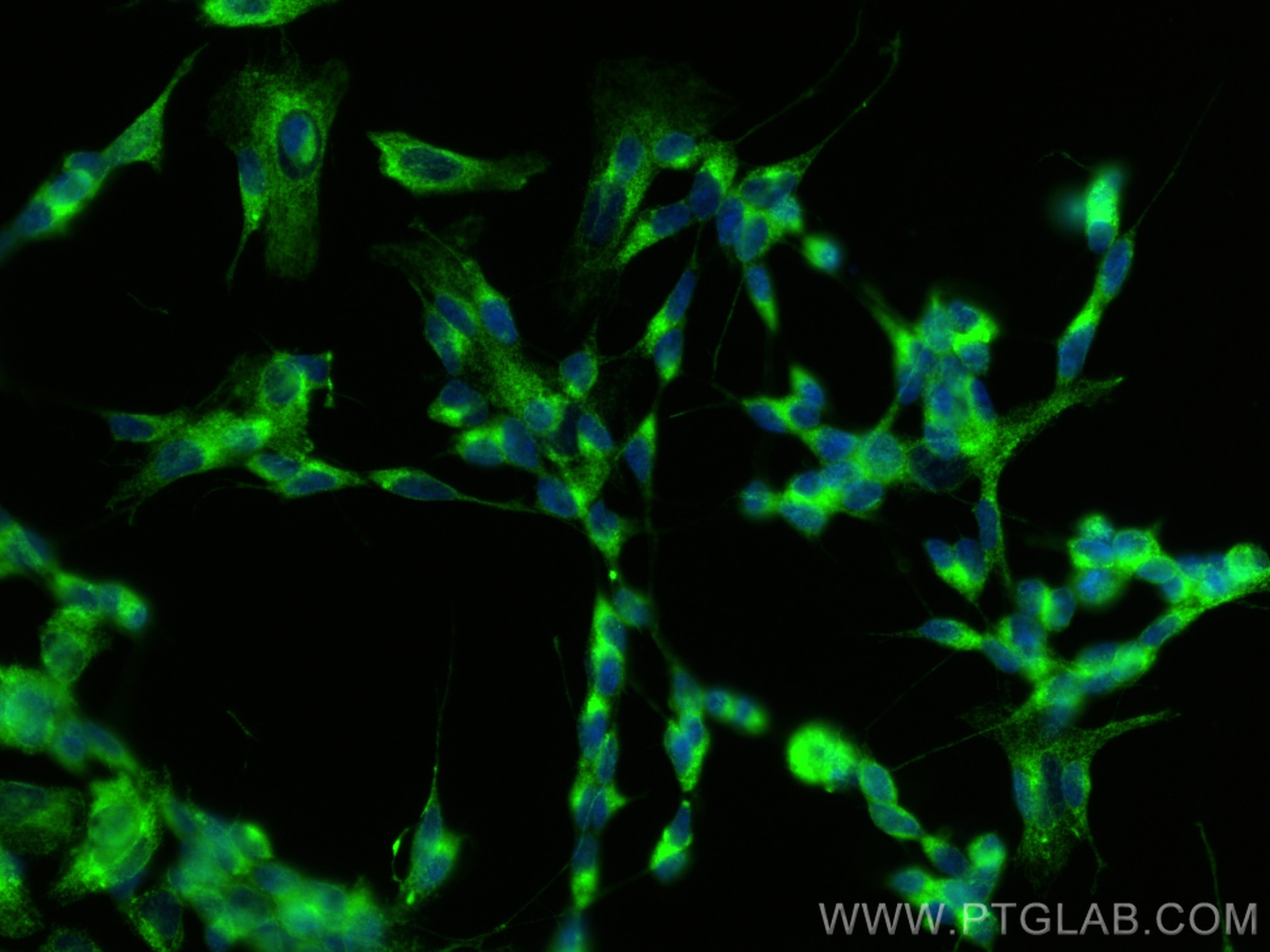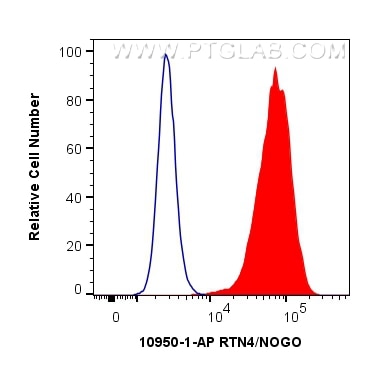Tested Applications
| Positive WB detected in | A375 cells, HepG2 cells, A549 cells, SH-SY5Y cells |
| Positive IHC detected in | mouse brain tissue, human testis tissue Note: suggested antigen retrieval with TE buffer pH 9.0; (*) Alternatively, antigen retrieval may be performed with citrate buffer pH 6.0 |
| Positive IF/ICC detected in | SH-SY5Y cells, A375 cells |
| Positive FC (Intra) detected in | HeLa cells |
Recommended dilution
| Application | Dilution |
|---|---|
| Western Blot (WB) | WB : 1:5000-1:50000 |
| Immunohistochemistry (IHC) | IHC : 1:50-1:500 |
| Immunofluorescence (IF)/ICC | IF/ICC : 1:200-1:800 |
| Flow Cytometry (FC) (INTRA) | FC (INTRA) : 0.40 ug per 10^6 cells in a 100 µl suspension |
| It is recommended that this reagent should be titrated in each testing system to obtain optimal results. | |
| Sample-dependent, Check data in validation data gallery. | |
Published Applications
| KD/KO | See 4 publications below |
| WB | See 11 publications below |
| IHC | See 1 publications below |
| IF | See 3 publications below |
Product Information
10950-1-AP targets RTN4/NOGO in WB, IHC, IF/ICC, FC (Intra), ELISA applications and shows reactivity with human, mouse samples.
| Tested Reactivity | human, mouse |
| Cited Reactivity | human, mouse, rat |
| Host / Isotype | Rabbit / IgG |
| Class | Polyclonal |
| Type | Antibody |
| Immunogen |
CatNo: Ag1392 Product name: Recombinant human RTN4 protein Source: e coli.-derived, PGEX-4T Tag: GST Domain: 1-373 aa of BC012619 Sequence: MEDLDQSPLVSSSDSPPRPQPAFKYQFVREPEDEEEEEEEEEEDEDEDLEELEVLERKPAAGLSAAPVPTAPAAGAPLMDFGNDFVPPAPRGPLPAAPPVAPERQPSWDPSPVSSTVPAPSPLSAAAVSPSKLPEDDEPPARPPPPPPASVSPQAEPVWTPPAPAPAAPPSTPAAPKRRGSSGSVVVDLLYWRDIKKTGVVFGASLFLLLSLTVFSIVSVTAYIALALLSVTISFRIYKGVIQAIQKSDEGHPFRAYLESEVAISEELVQKYSNSALGHVNCTIKELRRLFLVDDLVDSLKFAVLMWVFTYVGALFNGLTLLILALISLFSVPVIYERHQAQIDHYLGLANKNVKDAMAKIQAKIPGLKRKAE Predict reactive species |
| Full Name | reticulon 4 |
| Calculated Molecular Weight | 130 kDa |
| Observed Molecular Weight | 45-50 kDa |
| GenBank Accession Number | BC012619 |
| Gene Symbol | NOGO |
| Gene ID (NCBI) | 57142 |
| RRID | AB_2877741 |
| Conjugate | Unconjugated |
| Form | Liquid |
| Purification Method | Antigen affinity purification |
| UNIPROT ID | Q9NQC3 |
| Storage Buffer | PBS with 0.02% sodium azide and 50% glycerol, pH 7.3. |
| Storage Conditions | Store at -20°C. Stable for one year after shipment. Aliquoting is unnecessary for -20oC storage. 20ul sizes contain 0.1% BSA. |
Background Information
Reticulon (RTN) proteins are a group of membrane-bound proteins that largely reside in endoplasmic reticulum (ER) (PMID: 18177508). Reticulon proteins share a common sequence feature, the reticulon homology domain (RHD). They are involved in shaping the tubular endoplasmic reticulum network, membrane trafficking, inhibition of axonal growth, and apoptosis (PMID: 24218324). Four mammalian reticulons (RTN1-4) exist. RTN4 (also known as Neurite outgrowth inhibitor or Nogo) is a myelin-associated neurite growth inhibitory protein. Some isoforms of RTN4 have been described. RTN4A (Nogo-A, runs at ~200 kDa), RTN4B (Nogo-B, 40-55 kDa), and RTN4C (Nogo-C, 22-25 kDa) are three major isoforms (PMID: 31092426; 16469703).
Protocols
| Product Specific Protocols | |
|---|---|
| IF protocol for RTN4/NOGO antibody 10950-1-AP | Download protocol |
| IHC protocol for RTN4/NOGO antibody 10950-1-AP | Download protocol |
| WB protocol for RTN4/NOGO antibody 10950-1-AP | Download protocol |
| Standard Protocols | |
|---|---|
| Click here to view our Standard Protocols |
Publications
| Species | Application | Title |
|---|---|---|
Cell Death Dis Identification of Nogo-B as a potential therapeutic target of osteosarcoma via stereochemically selective covalent probes | ||
PLoS Biol Reticulon and CLIMP-63 regulate nanodomain organization of peripheral ER tubules.
| ||
Autophagy Dengue and Zika viruses subvert reticulophagy by NS2B3-mediated cleavage of FAM134B. | ||
J Cell Sci SEC24A facilitates colocalization and calcium flux between endoplasmic reticulum and mitochondria. | ||
Drug Des Devel Ther Tanshinone IIA Promotes Axonal Regeneration in Rats with Focal Cerebral Ischemia Through the Inhibition of Nogo-A/NgR1/RhoA/ROCKII/MLC Signaling. | ||
Discov Oncol Unraveling the causal relationship and potential mechanisms between osteoarthritis and breast cancer: insights from mendelian randomization and bioinformatics analysis
|

